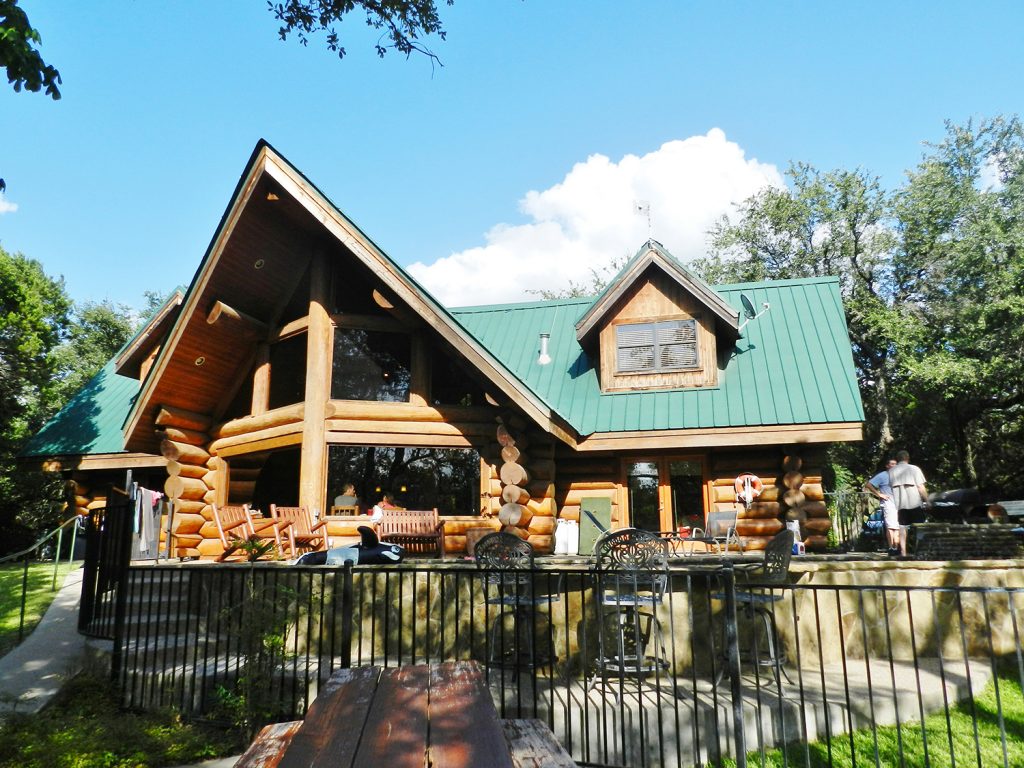Growing Texas Counties
Economic Development Tools Help Lure Business, Jobs, Tourists
By Julie Anderson
Editor
When it comes to growing the local economy, the McCulloch County Commissioners Court is hands-on. For example the sole action item on the Aug. 3 Commissioners Court Agenda read as follows: “Consider and act on adopting guidelines and criteria allowing the creation of reinvestment zones for economic development activity.”
“Our Commissioners Court plays a significant role in economic development,” declared McCulloch County Judge Danny Neal. “We have been a sand mining county for many years, supplying frac sand to the oil and gas industry.” A couple of the area sand minds and plants have been around for 50-plus years, but that number has grown to five at present “with another planned for the near future when the price of oil firms up.
“When you consider the truck driving jobs, tires, maintenance and direct employment, the sand industry provides approximately 1,000 jobs in a county of 8,300 population,” Neal summarized.
The McCulloch County Commissioners Court also recently approved a reinvestment zone for the Rattlesnake Wind Farm energy project by RES Energy, which “represents a tremendous increase to our taxable base.”
As part of its focus on economic development, the Burnet County Commissioners Court imposed a county hotel occupancy tax around 2005, said Burnet County Judge James Oakley, who was serving as a County Commissioner when the tax was implemented.
As County Judge, Oakley now oversees the administration of these tax funds; the tax generates some $300,000 per year at a 5 percent collection rate amongst the 48 properties subjected to the tax in unincorporated areas of the county.

Expenditures of hotel occupancy tax funds must comply with a “two-part test.” First, each expense must promote the hotel and convention industry (i.e. “put heads in hotel beds”). Second, each disbursement also must conform to at least one of seven statutorily-designated categories, as listed below.
Burnet County uses a portion of the funds to sponsor “The Daytripper with Chet Garner,” a television program that not only airs across Texas, but across the country in over 40 markets.
“Since we hit such a big audience, folks are more than a day trip away and are spending extended weekends and family vacations in Burnet County,” Garner shared. The program is “spreading the name of Highland Lakes far and wide,” he continued.
This year funds will also be used to revamp the Burnet County Courthouse Christmas lights, Oakley reported, in an effort to “really dress up the courthouse and the courthouse grounds with the hopes that folks will include us in their Trail of Lights Tour and stay in the area during a normally low season.”
Reinvestment zones, tax abatements, and the county hotel occupancy tax are just a few of the economic development tools available to Texas counties, as explained in detail below:
Tax Increment Financing
Tax Increment Financing (TIF) is a tool that local governments can use to publicly finance needed structural improvements and enhance infrastructure within a reinvestment zone. These improvements are usually undertaken to promote existing businesses and/or to attract new business to the area.
The cost of improvements is repaid by the contribution of future tax revenues by each taxing unit that levies tax against the property. Each taxing unit may choose to dedicate all, a portion of, or none of the tax revenue that is attributable to the increase in property value resulting from the improvements.
Tax increment financing may be initiated by one of two ways: 1) by petition of the affected property owners, or 2) by the city or county’s governing body. Counties or municipalities interested in initiating tax increment financing should seek the advice of legal counsel.
Changes to the TIF Act during the 82nd Legislative Session included the addition of actual costs of remediation, preservation, or demolition of public or private buildings and school facilities costs to the definition of “project costs.” In addition, the TIF Act adds undeveloped land to the kinds of land that may be designated a reinvestment zone. Another significant change authorized a Commissioners Court to enter into a TIF agreement with a municipality on behalf of other taxing units (excluding hospital districts) if the ad valorem tax rate of the other taxing unit is approved by the Commissioners Court or the Commissioners Court is required by statute to levy the ad valorem taxes of the other taxing unit. More information is available at: www.texasahead.org/tax_programs/increment_finance/. Reference – Chapter 311, Tax Code

Tax Abatement Act
A tax abatement is an agreement between a taxing unit and a property owner that exempts all or part of an increase in the value of real property and/or tangible personal property from taxation for a period not to exceed 10 years. Counties, cities, and special districts may enter into tax abatement agreements; school districts may not. Taxing units must adopt guidelines and criteria that govern abatements, prior to offering tax abatement agreements. These guidelines and criteria are effective for two years, after which they must be reviewed, revised and re-adopted by the governing body of the taxing unit.
Property that is to be abated must be in a designated reinvestment zone. A city or county may designate a reinvestment zone if its governing body determines that the area meets the statutory requirements. The governing body may designate a reinvestment zone only after holding a public hearing and finding that the improvements sought are feasible and would benefit the zone. At least seven days before the public hearing, notice of the hearing must be published in a newspaper of general circulation and delivered to any other local government units that have taxing jurisdiction in the area to be included in the zone. Reinvestment zones are effective for five years and may be renewed. Once a reinvestment zone is designated, the governing body of a taxing unit may enter into a tax abatement agreement if it finds that the terms of the agreement and the property subject to the agreement meet the applicable guidelines and criteria adopted by the governing body. Each taxing unit (except a school district) that has jurisdiction over a property may offer a separate tax abatement agreement. More information is available at www.texasahead.org/tax_programs/proptax_abatement/. Reference – Chapter 312, Tax Code
County Assistance Districts
Counties may hold an election in all or part of the county to create one or more county assistance districts and adopt a sales tax to fund the districts. Any county may adopt this sales tax, in all or part of the county, if the new combined local sales tax rate would not exceed 2 percent at any location. The tax may be adopted in increments of one-eighth of 1 percent, to a maximum of 2 percent. A district may undertake a variety of projects including roads or highways; provision of law enforcement and detention services; the maintenance or improvement of libraries, museums, parks or other recreational facilities; or other services that benefit the public welfare. More information is available at: www.texasahead.org/tax_programs/countyasst/. Reference – Chapter 387, Local Government Code

Enterprise Zones
The Texas Enterprise Zone Program is an economic development tool that allows local communities to partner with the State of Texas to promote job creation and capital investment in economically distressed areas of the state. Local communities may provide incentives such as tax abatements, fee waivers, and reduced regulations to businesses within an enterprise zone. They also may nominate businesses as enterprise projects. Enterprise projects are selected by the state and may be eligible for sales tax refunds and other benefits. The Comptroller’s office administers enterprise zone refunds under Section 151.429 of the Tax Code. For additional information, contact the Economic Development and Tourism Division of the Governor’s Office at 512-936-0100. More information is available at: www.texaswideopenforbusiness.com/incentives-financing/tax/tez.php and www.texasahead.org/tax_programs/enterprise/. Reference – Chapter 2303, Government Code
Chapter 380/381 Agreements
Chapters 380 (cities) and 381 (counties) of the Local Government Code grant cities and counties broad discretion to make loans and grants of public funds or the provision of public services, at little or no cost, to promote all types of business development including industrial, commercial and retail projects. Each agreement can be uniquely tailored to address the specific needs of both the local government entity and the business prospect. Cities should review their charters for provisions which might restrict their ability to implement an incentive agreement. Both cities and counties should consider adopting policies or guidelines to provide a framework for negotiating development agreements. Cities and counties throughout Texas have utilized Chapter 380/381 agreements to attract businesses and jobs to their communities. More information is available at: www.texasahead.org/tax_programs/ch380-381/. References – Chapters 380-381, Local Government Code
Municipal & County Hotel Occupancy Tax
Home rule cities, general law cities and some 60-plus counties are authorized to impose a local hotel occupancy tax within their jurisdictions. For most cities the tax rate may not exceed 7 percent of the price paid for the use of a hotel room. The tax rate for eligible counties varies. Cities with populations under 35,000 also may impose the hotel occupancy tax in the city’s extraterritorial jurisdiction (ETJ). If a city adopts the hotel occupancy tax within its ETJ, the combined rate of state, county, and municipal hotel occupancy taxes may not exceed 15 percent.
If the Venue Tax is also imposed, the maximum combined rate a municipality or county may impose is 17 percent, as stated by the 83rd Texas Legislature in House Bill 1908: “A municipality or county may not propose a hotel occupancy tax rate that would cause the combined hotel occupancy tax rate imposed from all sources at any location in the municipality or county, as applicable, to exceed 17 percent of the price paid for a room in a hotel.”
Expenditures of hotel occupancy tax funds must comply with a “two-part test.” First, each expense must promote the hotel and convention industry (i.e. “put heads in hotel beds”). Second, each disbursement also must conform to at least one of seven statutorily-designated categories. The categories are:
- convention and visitor centers;
- convention registration;
- advertising the city;
- promotion of the arts;
- historic restoration and preservation;
- sporting events, if the city is located in a county with a population of 1,000,000 or less; and
- tourist transportation systems.
More information including eligibility requirements is available at: www.window.state.tx.us/taxinfo/hotel/index.html and https://www.oag.state.tx.us/AG_Publications/pdfs/econdevhb2008.pdf. References – Chapters 351-352, Tax Code.
Public Improvement Districts (PIDs)
PIDs offer cities and counties a means for improving their infrastructure to promote economic growth in an area. The Public Improvement District Assessment Act allows cities and counties to levy and collect special assessments on properties that are within the city or its extraterritorial jurisdiction. Additional financing options are available to certain large counties. PIDs may be formed to create water, wastewater, health and sanitation, or drainage improvements; street and sidewalk improvements; mass transit improvements; parking improvements; library improvements; park, recreation and cultural improvements; landscaping and other aesthetic improvements; art installation; creation of pedestrian malls or similar improvements; supplemental safety services for the improvement of the district, including public safety and security services; or supplemental business-related services for the improvement of the district, including advertising and business recruitment and development. More information is available at: www.texasahead.org/tax_programs/pubimprovement/. Reference – Chapter 372, Local Government Code
Venue Tax “Stadium Bill” (one-eighth, one-fourth, three-eighths or one-half of 1 percent)
This sales tax is one of several revenue options available to a city or county to fund sports and community “venue” projects. Multiple cities and counties in any combination may join to form a venue district under Chapter 335, Local Government Code, as well. Some examples of a “venue” are a stadium, convention center, park or economic development-type facility. If the county already has a combined local sales tax rate of 2 percent, the county may not levy this tax. References – Chapters 334 and 335, Local Government Code. – The Texas Comptroller of Public Accounts contributed information to this article.















